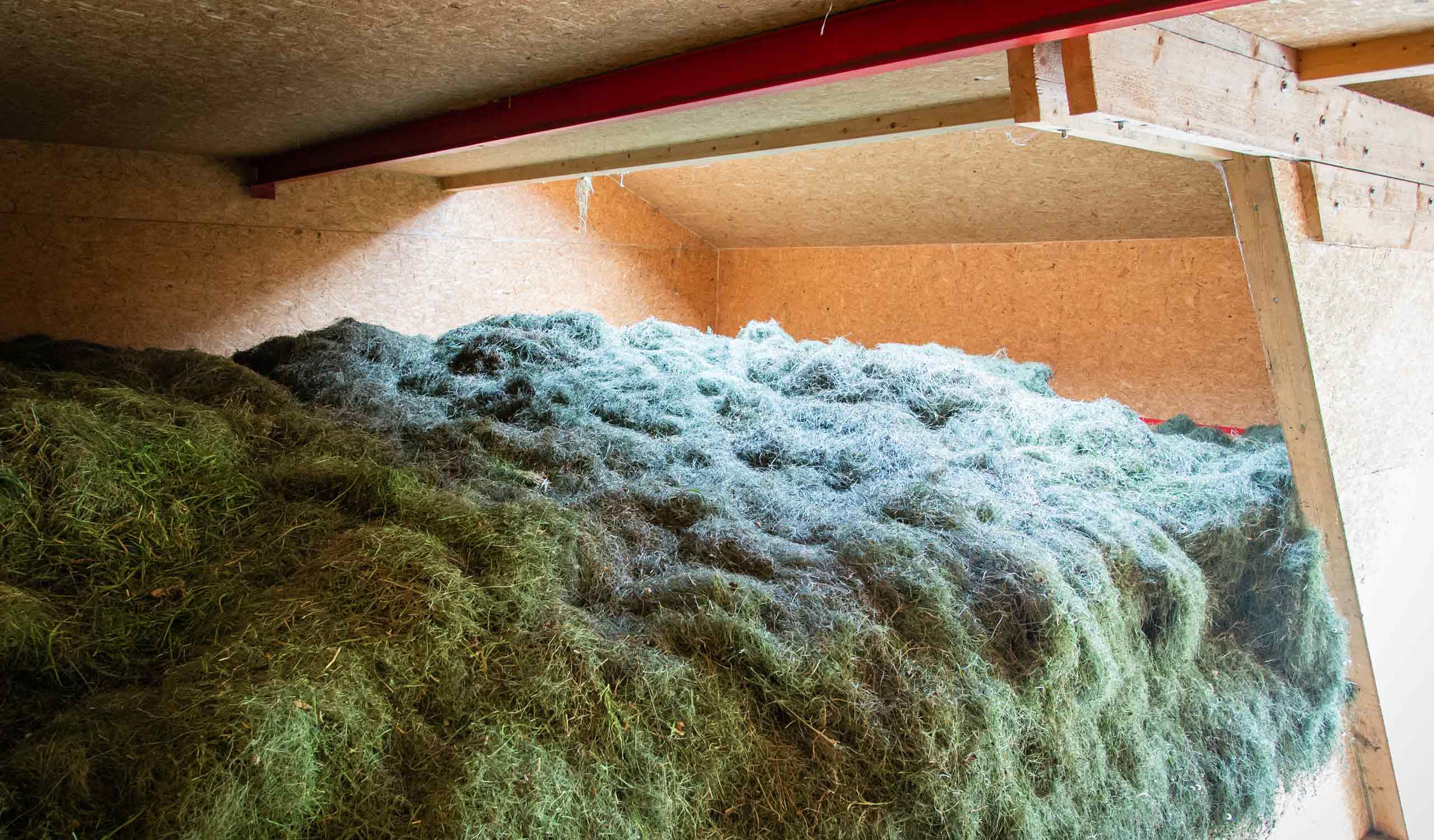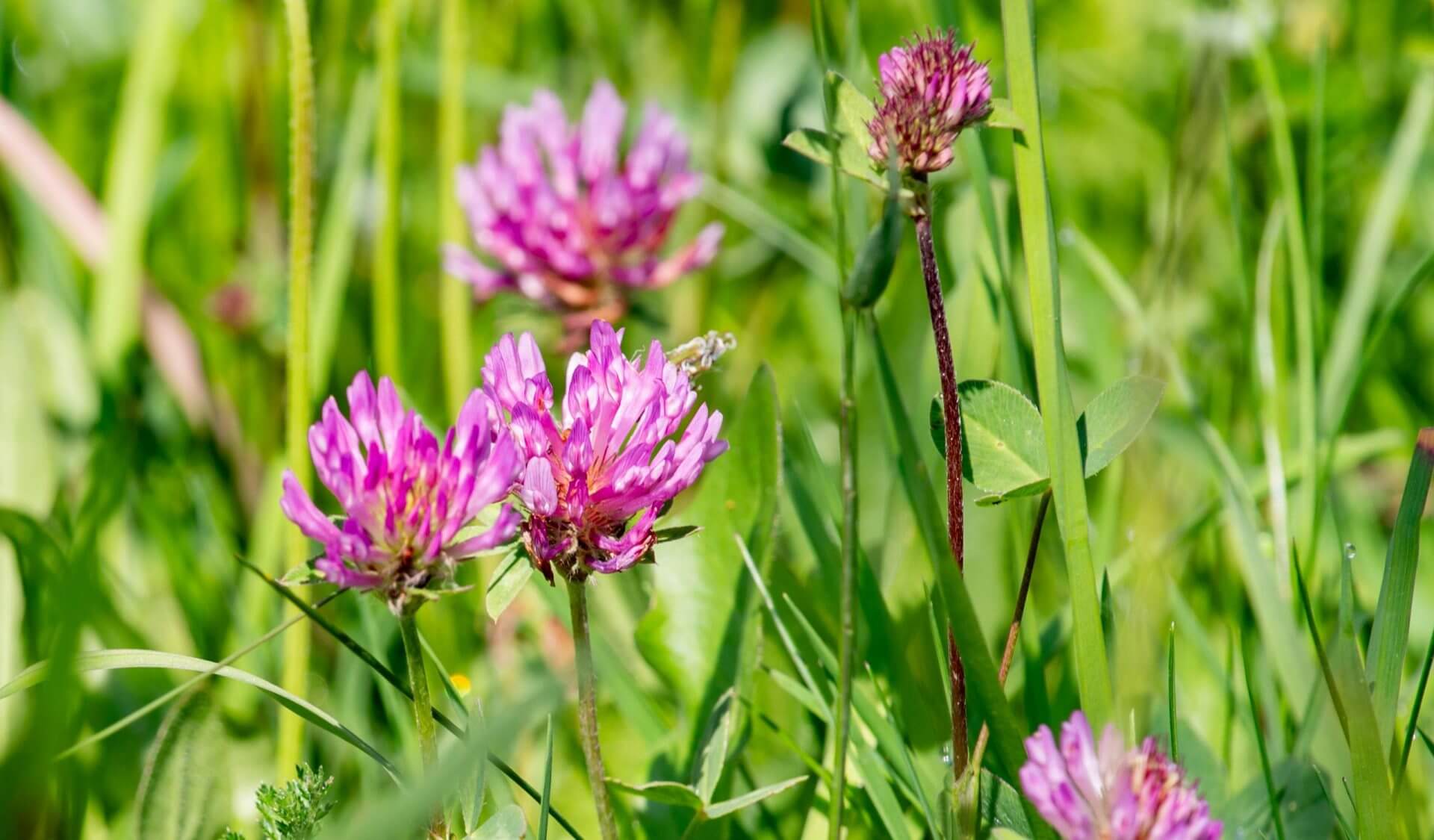Advantages & Economy
Feeding the cows in the natural course of the year brings significant advantages. Producing your own quality feed makes you independent!
Rising concentrate prices are forcing farmers to be more aware of basic forage production. Increased feed intake through quality hay is becoming more important as animal performance increases. Besides saving on concentrate, hay has a higher protein stability than grass or silage, which means that more protein reaches the small intestine without detours and is available to the animal, thus reducing metabolic stress.

Increased feed intake
Feeding hay stimulates ruminating activity and results in a correspondingly higher feed intake. Hay does not contain any fermentation acids that curb the appetite. With each additional kilogram of hay eaten, about 0.75 kg of concentrated feed can be saved.

Hardly any clostridial spores
Clostridia occur naturally in the soil and are involved in the decomposition of organic matter there. Contaminated green fodder (recognizable by a crude ash content of more than 10 %) increasingly introduces clostridia into the feed chain, where they can multiply explosively under suitable conditions. Spore levels are lowest when high quality hay is fed and pasture is used. A high spore count in milk makes it impossible to produce hard cheese from raw milk, which is why most hay milk is used in cheese production.

High protein stability
Warm air dried hay has a higher protein stability, which improves the protein supply in the small intestine and thus does not cause a feeling of satiety.

More energy
Quality hay contains more sugar and thus a higher total energy content compared to grass silage, as no sugar is consumed for the lactic acid fermentation of the feed. Sugar promotes the activity of the rumen microbes and thus also the appetite. However, a total sugar content of max. 15% or of sugar and easily water-soluble starch of max. 30% in the total ration should not be exceeded. Therefore, when changing feeding to quality hay, it is urgent to ensure that the correct concentrate (rather slowly available starch) is fed in order to avoid acidification of the rumen (acidosis).

Feeding young cattle
Feeding with quality hay provides a number of advantages in calf feeding through young cattle rearing to dairy cows. The development of the rumen villi is positively promoted and thus the foundation is laid for a later high basic feed intake.

Positive image
Hay milk has a positive image and is in high demand on the market. This makes it possible to achieve a higher milk price, which is necessary for the more costly farming method.

Costs
The costs of a hay drying system are very much dependent on the individual farm and the conditions on site. Basically, one must start from the forage quantity/area. Thus, a crop should be able to be processed on 2 – 3 times mowing. The installation of a roof suction is the most favorable in the acquisition and also in the drying. Additional technology is needed for nighttime and inclement weather to safely finish dry within the 70 hour time limit.
For new plants, drying costs should be targeted at an annual average of about 1 cent per kg of hay. If a plant does not have a roof extraction system and feed is brought in rather moist, the costs can rise up to 3 cents. Furthermore, it must be considered that an appropriate storage space must be available for hay, which causes additional costs for new purchases.

Benefit
The benefits of a drying plant are noticeable on several levels. First and foremost is the increase in basic forage output due to the better preserved plant stock. Compared to ground hay, increased milk yields of up to 1,000 liters per cow per year are often possible. The reason lies in the long field lying time, crumble losses and subsequent storage losses of ground hay.
Quality aeration hay is on the same level of ingredients as first-class grass silage, but more of the hay is eaten (dry matter), which can save expensive supplementary feed or increase milk yield.
If the preservation is successful, there is no reheating of the hay and also no faulty fermentation. Trials have shown that while the production of unblemished grass silage has advantages in harvest yield, preservation is incomparably more difficult than with hay.
With a drying system, the forage can be harvested in much shorter time windows – e.g. 28 hours from mowing to the roof – which means that the ideal cutting time is reached much sooner and is not exceeded. This means a high energy content in the forage which is available to the animals.
Another advantage of a drying system is the increased animal health and fertility. This point is difficult to put into figures, but an increase is obvious in the case of previously moderate forage quality. Clear indications are provided by the sensory evaluation of hay in terms of color and odor.

Comfort
The increasing comfort due to the use of drying equipment has received little attention so far. However, the fodder harvest means large work peaks, which can also be to the detriment of the entire family. Many farms today are run on a sideline basis, which means that someone can no longer look after the farm around the clock and one is dependent on flexible employers. Being able to safely harvest high-quality forage with an impact of 2 – 3 drying batches per crop during short periods of good weather is a great relief for the farmer and was not possible for a long time in the hay industry.
Today, modern plant control systems ensure a minimum of maintenance effort for the plant, right up to error messages to a cell phone. However, hay farming offers great advantages, especially in winter: much lower weights of feed have to be moved, rations are usually composed of only two ingredients (hay and supplementary feed) and do not have to be mixed. There is no need to cover silage storage areas or open tightly pressed bales, and there is no need to clear the storage area of snow.